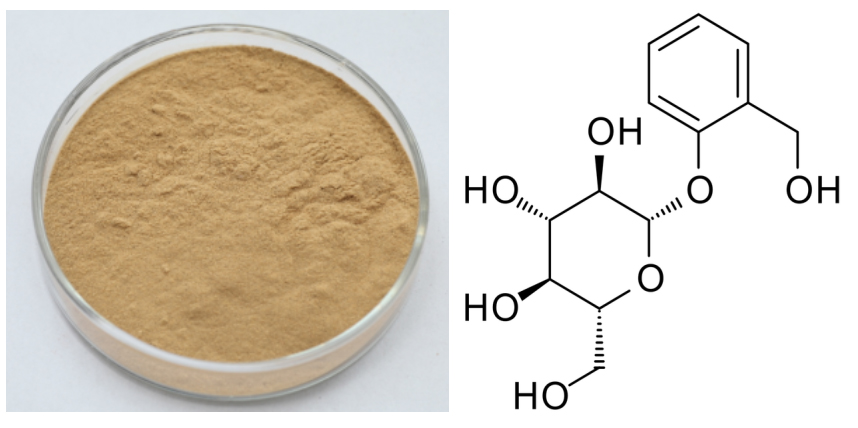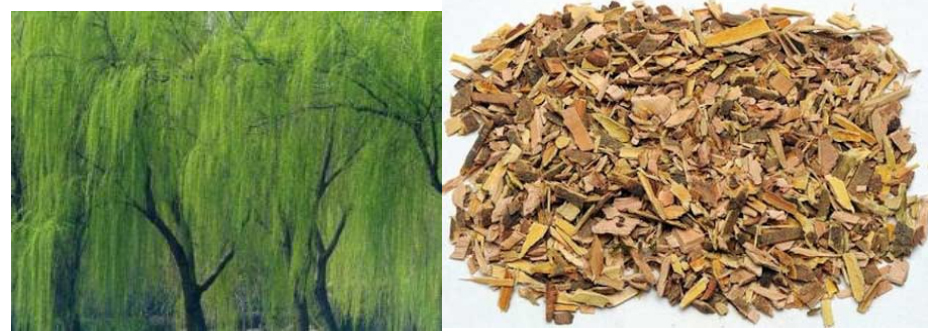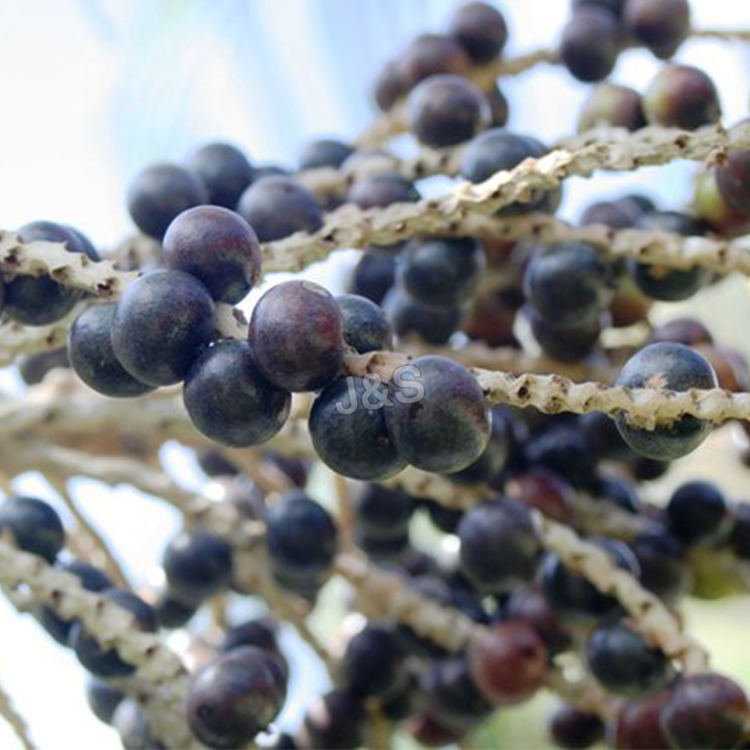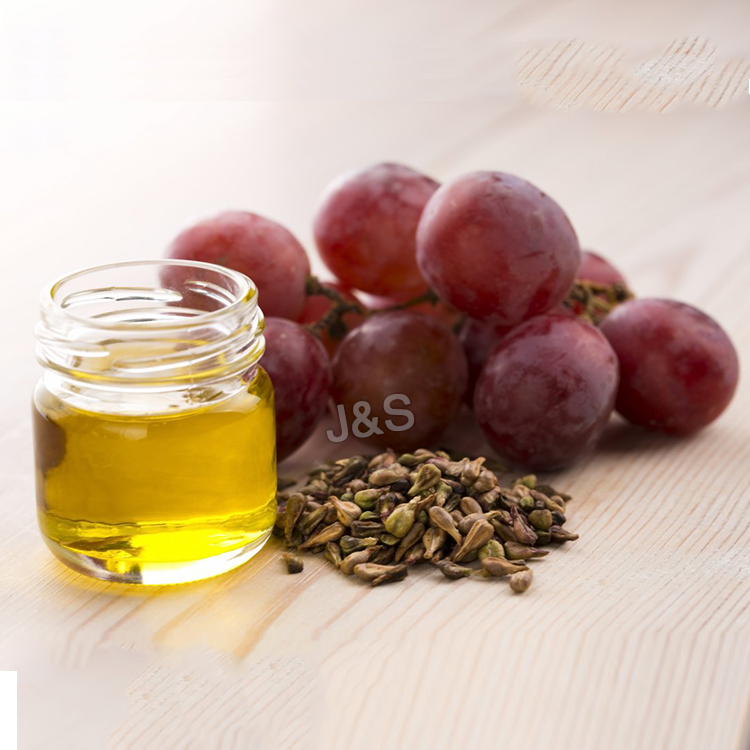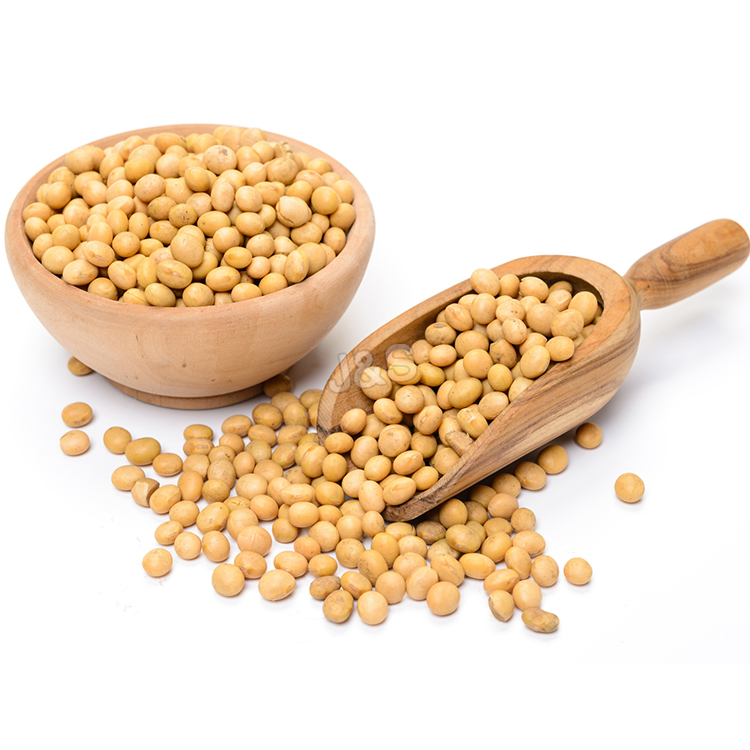OEM/ODM Supplier for White Willow Bark Extract Factory from Hongkong
OEM/ODM Supplier for White Willow Bark Extract Factory from Hongkong Detail:
[Latin Name] Salix alba L.
[Plant Source] from China
[Specifications] Salicin 15-98%
[Appearance] Yellow Brown to White powder
Plant Part Used: Bark
[Particle size] 80 Mesh
[Loss on drying] ≤5.0%
[Heavy Metal] ≤10PPM
[Storage] Store in cool & dry area, keep away from the direct light and heat.
[Shelf life] 24 Months
[Package] Packed in paper-drums and two plastic-bags inside.
[Net weight] 25kgs/drum
Brief Introduction
Salicin is a naturally occurring compound found in the bark of several species of trees, primarily North American in origin, that are from the willow, poplar, and aspen families. White willow, from whose Latin name, Salix alba, the term salicin is derived, is the most well known source of this compound, but it is found in a number of other trees, shrubs, and herbaceous plants as well being synthesized commercially. It is a member of the glucoside family of chemicals and is used as an analgesic and antipyretic. Salicin is used as a precursor for the synthesis of salicylic acid and acetylsalicylic acid, commonly known as aspirin.
A colorless, crystalline solid in its pure form, salicin has the chemical formula C13H18O7. Part of its chemical structure is equivalent to the sugar glucose, meaning it is classified as a glucoside. It is soluble, but not strongly so, in water and alcolhol. Salicin has a bitter taste and is a natural analgesic and antipyretic, or fever reducer. In large quantities, it can be toxic, and overdoses may lead to liver and kidney damage. In its raw form, it may be mildly irritating to skin, respiratory organs, and eyes.
Function
1. Salicin is used to ease pain and reduce inflammation.
2. Relieve acute and chronic pain, including headache, back and neck pain, muscle aches, and menstrual cramps; Control arthritis discomforts.
3. Relieve acute and chronic pain.
4. It has the same effect on the body as aspirin without any of the side effects.
5. It is an anti-inflammatory, a fever reducer, an analgesic, an anti-rheumatic, and an astringent. Specifically, it helps to relieve headaches.
Application
1.Anti-inflammatory, anti-rheumatic,
2.Reduce a fever,
3.Use as an analgesic and astringent,
4.Relieve headache,
5.Ease pain caused by rheumatism, arthritis, and carpal tunnel syndrome.
Product detail pictures:
Related Product Guide:
Our products are broadly identified and trustworthy by people and may meet continually modifying financial and social requires of OEM/ODM Supplier for White Willow Bark Extract Factory from Hongkong , The product will supply to all over the world, such as: Sri Lanka, Botswana, Chicago, For anyone who is keen on any of our items right after you view our product list, you should definitely feel absolutely free to get in touch with us for inquiries. You are able to send us emails and contact us for consultation and we shall respond to you as soon as we can. If it's easy, you may locate out our address in our web-site and come to our business for far more information of our merchandise by your self. We're always ready to construct extended and steady co-operation relations with any possible customers in the related fields.
Hochwirksames Aphrodisiakum für Sie & Ihn. 100% natürliche Inhaltsstoffe.
https://biothemra.com/
Themra Epimedyum Macun: Was ist das?…
Themra Epimedyum Macun ist ein reines Naturprodukt ohne künstliche Zusatzstoffe und wirkt mindestens (!) genau so gut wie die hiesigen Mittel der Pharmaindustrie. Zudem hat es keine bekannten Nebenwirkungen. Während herkömmliche Produkte lediglich auf die Mechanik des männlichen Geschlechtsorganes wirken, ist Themra Epimedyum Macun in seiner Wirkung wesentlich ganzheitlicher, indem es Grundsätzlich die Libido beider Geschlechter erhöht. Themra Epimedyum Macun schafft durch die speziell abgestimmten, natürlichen Wirkstoffe ein besonders intensives, (sexuelles) Wohlbefinden für Sie und Ihn.
Bei der Frau wird der gesamte Genitalbereich durch die bessere Durchblutung besonders empfänglich für Berührungen, die dann starke erotische Reaktionen auslösen können. Beim Mann lässt Themra Epimedyum Macun den Penis bei anhaltender Ausdauer sehr groß und fest werden, erhöht die Spermienproduktion wesentlich und verhindert eine vorzeitige Ejakulation.
Einnahme und Dosierung: Die Einnahme von Themra Epimedyum Macun sollte etwa 45 Minuten vor Beginn des Liebesaktes erfolgen. Die Wirkung hält bei entsprechender sexueller Reiz-Stimulierung, mindestens 12 Stunden lang an. Vor jedem Gebrauch die Paste gut umrühren. Die Dosierung von ca. 3 Gramm (ab 60 kg bis ca. 80 kg Körpergewicht); entspricht in etwa der Menge eines vollen (mitgelieferten) Dosierlöffels und ist im Regelfall völlig ausreichend. Ihre individuelle Dosis finden Sie nach einigen Anwendungen selbst schnell heraus. Bitte die Erstanwendung nicht übertreiben. Themra Epimedyum Macun wirkt sehr intensiv und zuverlässig. Der gleichzeitige Konsum starker Alkoholika ist nicht zu empfehlen, da diese die positive Wirkung beeinträchtigen können. Zudem sollte die Dosis nur 1 mal innerhalb von 24 Stunden angewendet werden. In der Schwangerschaft, bei Diabetes, Herz- und Blutdruckproblemen wird die Einnahme nicht empfohlen – im Zweifelsfall sprechen Sie bitte mit Ihrem Arzt.
Sie erhalten mit Themra Epimedyum Macun nicht nur ein preiswertes und rezeptfreies, sondern auch ein seit 2009 jährlich geprüftes, zertifiziertes Aphrodisiakum. Ein Glas mit 43 g Inhalt reicht bei regelmäßiger Einnahme ca. 10-14 Tage. Anwender von Themra Epimedyum Macun berichten über den angenehmen Geschmack und die ausgezeichnete Wirkung. Lagerhinweis: Kühl und vor Sonnenlicht geschützt, jedoch nicht im Kühlschrank aufbewahren, da sich die Paste sonst schwer umrühren lässt. Nach dem öffnen mindestens 3 Monate haltbar.
Fayed, A.E.
Detection of Domiati cheese adultration with palm oil.
Identification of palm oil in some fatty products.
Influence of insecticide residues on growth and activity of Streptococcus diacetilactis and Leuconostoc cremoris.
Presistence of Fenvalerate pyrethroid in milk in relation to lactic acid bacteria.
Susceptibility of some lactic acid bacteria to different insecticides.
Ultrafiltration of reconstituted skimmilk powder in relation to the rennet ability and casein fractions.
Application of ultrafiltration technique for production of low calorie recombined butter rich in protein.
Ultrafiltration whey protein concentrate as a substitute for egg white in pie topping meringue.
Production of aromatic recombined butter by using different milk solids not fat ingredients.
Distribution of some insecticides in milk fat globule materials.
Keeping quality of market butter oil in comparison with samna.
Ultrafiltration whey concentrate as protein fortifier in macaroni manufacture from wheat flour.
Fiber fortification of ice milk by means of cooked wheat.
Enhancement of milk fat quality by conversion into recombined butter in relation to some properties of skimmilk powder used.
Incidence of some environmental pollutants in milk and its products at great Cairo markets.
Substitution of non fat milk solids in ice cream with ultrafiltration whey protein concentrate.
Milk preparedness for bacterial growing in relation to environmental contaminants.
Quality evaluation of imported skimmilk prowder.
Effect of milk fat quality on the properties of recombined butter.
Utilization of some food industry wastes prepared as milk fat antioxidants.
Effect of microwave treatment on bacteriological and keeping quality of buffaloes milk.
Monitoring some contaminants during the manufacture of some conventional dairy products.
Ultrafiltration membrance permeability of some milk contaminants.
Physical and organoleptic properties of yoghurt made from standardized buffalo’s milk fortified with total milk proteinate.
Production and characterization of bacterial coagulants as calf rennet replacer for Egyptian cheesemaking.
The profile of market Domiati cheese with emphasis on biogenic amines occurrence.
Production of bacteriocin using ultrafiltrated milk permeate.
The use of ultrafiltration technique for recovery of nisin-like bacteriocin.
Comparative supplementation of ice cream mixes by ultrafiltrated skimmilk retentate or whey proteins concentrate.
Production of low calorie ice cream.
Comparative acylation methods of ultrafiltrated whey proteins concentrate with emphasis on the functional properties.
Effect of using alternative combination of glucono delta lactone with lactic starter culture on the properties of UF-white soft cheese during cold storage.
Brevibacterium linens as an adjunct starter culture in low fat Ras cheese.
Influence of some preservatives on cast UF-white soft cheese properties during cold storage.
Antifungal efficiency of a starter culture containing Lactobacillus reutrei during Ras cheese ripening.
Influence of formaldehyde and hydrogen peroxide as preservatives on the properties of buffalo’s milk proteins.
Comparative evaluation between Selandid and Maltodextrin as fat mimetic in low fat Ras cheesemaking.
Production of probiotic low calorie sour cream.
Production of light calorie whipped cream using mimetic fats and stevioside.
Effect of Transglutaminase on the quality of yoghurt made with different milk protein sources.
Biological evaluation of cow’s milk yoghurt fortified with different source of milk proteins.
Antifungal efficiency of a starter culture containing some Lactobacillus species during Ras cheese ripening.
Utilization of ultrafiltrated whey protein concentrate in the manufacture of reduced fat processed cheese spread.
Biological Attributes of bio-yoghurt versus the conventional one fed in spray dried form.
Effect of cow’s milk treatment with transglutaminase on the composition and quality of yoghurt with particular reference to its biological value.
Performance of transglutaminase as body stabilizer in Tallaga cheese made from ultrafiltrated cow’s milk retentate.
Utilization of mushroom powder for substituting dried skimmilk in the manufacture of processed cheese spread.
Glycoprotein fortification of bioyoghurt.
Improvement of yoghurt efficiency as functional food by glycoprotein fortification.
Application of ultrafiltration technique in the manufacture of reduced-calorie frozen bioyoghurt in synbiotic form.
Healthy multifunctional spectra of milk glycoproteins and their fragments.
Production of carbonated stirred yoghurt fortified with some physiological active ingredients.
Physiologically Active Ingredients as Yoghurt Fortifiers.
Rheological, microstructural and biological characteristics of probiotic ultrafiltrated skimmed milk cheese in comparison with the conventional Kariesh cheese.
Economics scale for processing of white soft cheese in Egypt.
Reasonable price, good attitude of consultation, finally we achieve a win-win situation,a happy cooperation!
